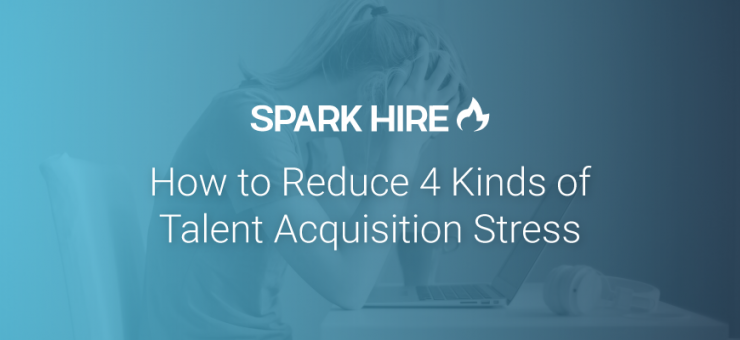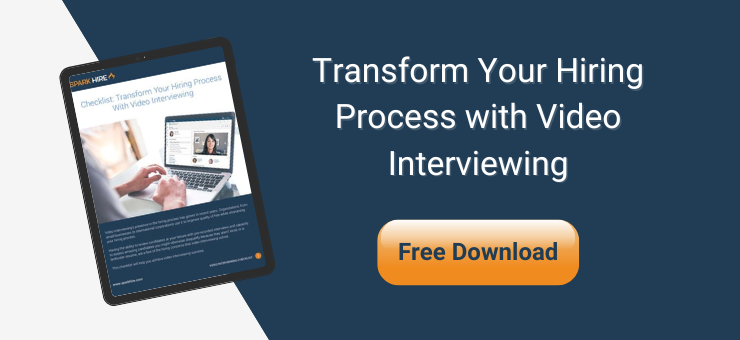Recruiting stress for many is just a fact of life. In fact, a recent study showed HR won the dubious honor of being the most stressful profession. The 2020 UK Workplace Stress Survey conducted by Perkbox revealed 79% of HR respondents (professionals in employment) said the stress of their jobs negatively impacted them.
The negative impacts of stress on productivity, job performance, career satisfaction, and health and well-being are well understood. Recently updated estimations by The Recovery Village put the cost of stress at $300 billion annually for American companies, as they deal with healthcare costs and lost workdays due to stress. Stress is also linked to health conditions from depression and anxiety to high blood pressure and heart disease.
Every April, National Stress Awareness Month, employers and employees around the country pause to focus on alleviating the pitfalls of workplace stress. The rapidly-shifting job market and economic climate make it even more important to focus on stress reduction.
General recommendations like adopting healthy eating habits, exercise, and mindfulness help decrease the impacts of everyday stress. But what about stressors specific to the talent acquisition industry? Here are a few tips for overcoming stress in talent acquisition:
Dealing with Anxious Hiring Managers
Handling talent acquisition stress brought on by anxious hiring managers can be challenging. The demands from hiring managers will be unusually high any time they feel their team is in danger of burning out because of a talent gap that needs to be filled — yesterday.
If hiring managers have unrealistic expectations for your talent acquisition team, bring them into the process so you can collectively mitigate strenuous expectations. Get feedback from hiring managers on top candidates and ask them to review qualifications and screening questions to ensure you’re funneling in the best talent from the start.
Hiring managers will feel calmer if they feel more connected to the talent acquisition process. Turning anxiety into engagement cuts down on everyone’s stress.
Navigating the Skills Shortage
The talent shortage has been a problem for recruiters looking to find the best candidates. While the market evolves and more talented candidates enter the labor market looking for new opportunities, the skills shortage remains a considerable challenge. In fact, Manpower Group reported 7 in 10 companies experienced the worst problems finding the right talent in 2019.
A great way to navigate stress brought on by the skills shortage is to start sourcing smarter. Open a hard-to-fill role to non-traditional or even remote talent that can get the job done. Targeting passive candidates is another smart way to hire people you know who already perform at a high level. You can also encourage employee referrals. Often, the best candidates already exist in your current employees’ social circles.
Most importantly, don’t forget about internal mobility. If you’re struggling to find talent with the skill level you need for your open roles, look to your company’s current roster to see which talent might be ripe for development. These highly-skilled “candidates” already fit your company culture and understand your processes, so they can spend their time learning new skills. Promoting from within reduces stress from talent acquisition through onboarding and, as a bonus, alleviates pressure on employees in the transition.
Getting Top Candidates to Commit
Top-tier talent will always have their pick of job offers. To stand out from the crowd, start in the interview. Keep in mind, 65% of candidates in a LinkedIn survey say a negative experience in the interview would make them lose interest in the job.
Reduce stress surrounding offer acceptance by looking critically at your interview process from the perspective of real-life candidates. Send a post-interview survey to collect honest feedback on your interview process. Make it anonymous to get unfiltered and high-quality data from candidates.
Use the insights you gather to improve the candidate experience. For example, consider how you can reduce stress by:
- Shortening application length
- Being more transparent about the length and scope of the process
- Updating skills tests
- Making it easier for passive talent to interview around their busy schedules
- Creating a clearer picture of the company culture
- Decreasing the number of in-person interviews
Ensuring the talent you bring into the hiring process has a more positive experience reduces stress for everyone and increases the likelihood of candidates jumping at your company’s offers.
Managing Your Time
Time isn’t on talent acquisition’s side. In fact, Monster’s 2018 State of Recruiter survey found 50% of recruiters feel crunched for time. And when you have little time, you likely have a lot of stress.
However, making time for great candidates can be the difference between hiring and missing out on the best talent. Fortunately, there are tools to reduce stress and guide your hiring team quickly and efficiently throughout the whole process.
For example, interview scheduling software removes the endless back-and-forth emails between talent acquisition pros and candidates. And one-way video interviews streamline the screening process. By asking structured interview questions, you can fairly screen out candidates who aren’t the right fit and can spend more time developing relationships with top talent.
No matter what the status of the job market is, talent acquisition stress will, unfortunately, always exist. But by making deliberate choices to focus on not just your stress, but reducing the stress of those around you, you can ensure your company consistently reaches the best hiring outcomes.












